3 Circles
 Guillaume Lethuillier
Guillaume LethuillierThis month, the Global Math Circle shared this puzzle:
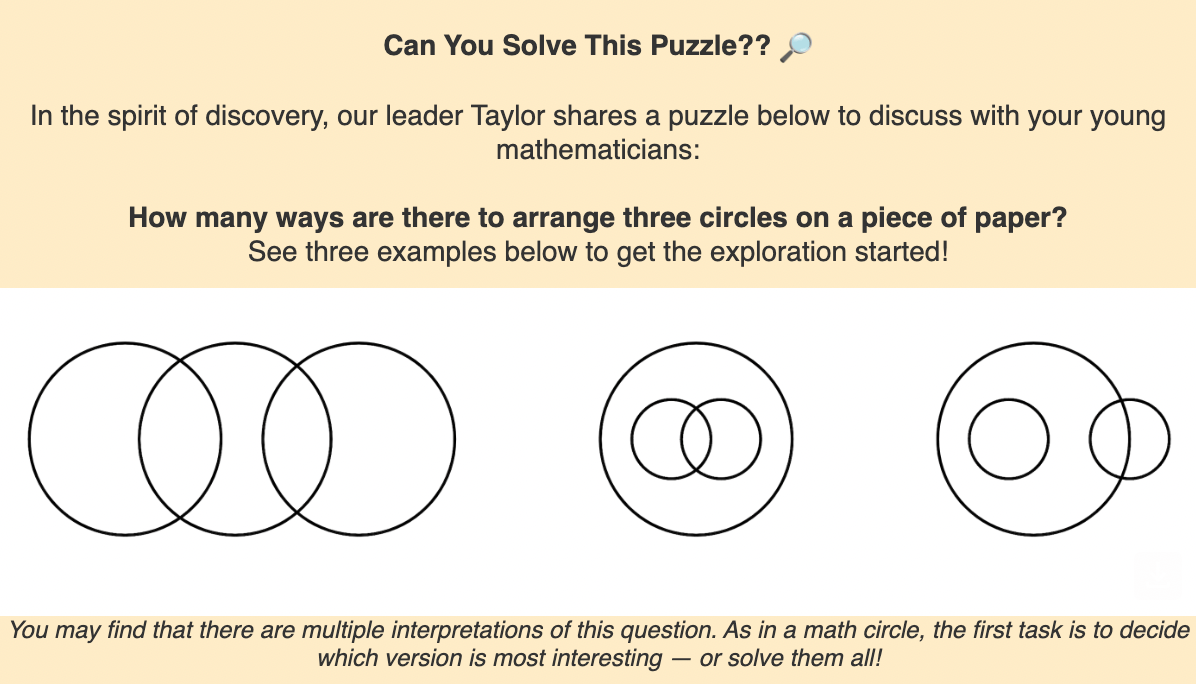
We receive their emails for our child. But because they are too young to solve it, even with our help, we decided to try solving this challenge ourselves. (We would love to have the opportunity to discuss it with them in a few years).
It appears that this problem is more complex than expected.
As stated by the puzzle, there are multiple ways to interpret how unique three circles can be arranged.
This StackExchange post uses types of intersections to arrange the circles:
circles may not intersect (0 intersection),
they may intersect through the same tangent (
pure kissing)they may intersection through different tangents (
pure crossing)neither of the above (
mixed)
Using this approach, the post's author identifies 49 unique arrangements of 3 circles.
One of the main shortcomings of this approach is the underutilization of the mixed criterion, which is employed only for one of the 11 categories. More importantly, there is no indication about how the arrangements of circles are generated per category.
We have developed a systematic method for arranging circles, an approach that we will use to test the author's claims.
To that end, we used a combination of criteria:
(First-order criterion) The relationship between two circles can be split into five categories:
one circle is outside the other, with no contact (outside, no contact);
one circle is outside the other, with contact (outside, contact);
one circle is inside the other, with no contact (inside, no contact);
one circle is inside the other, with contact (inside, contact);
one circle cuts the other (intersection).
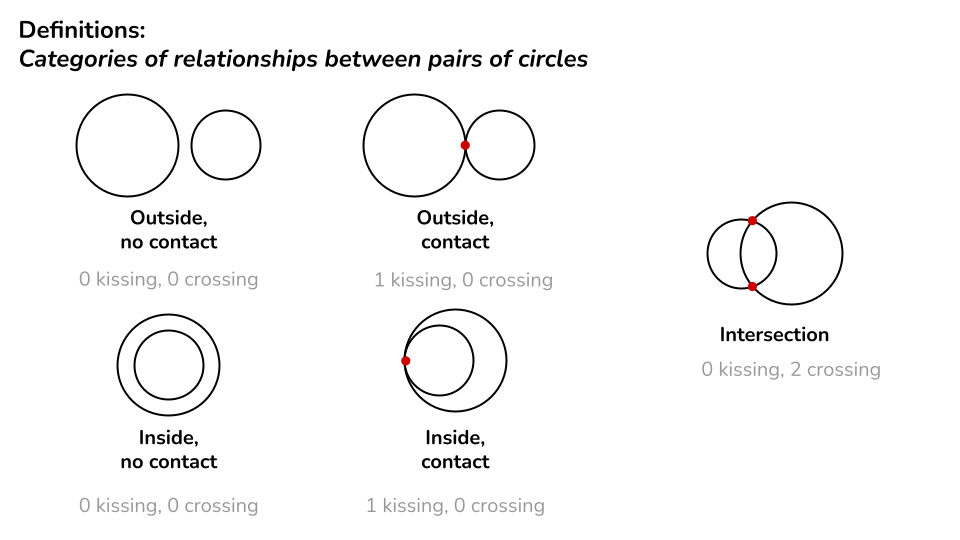
These relationships can then be defined for each pair of circles that compose the arrangement (for three circles A, B, and C: A↔B, A↔C, and B↔C).
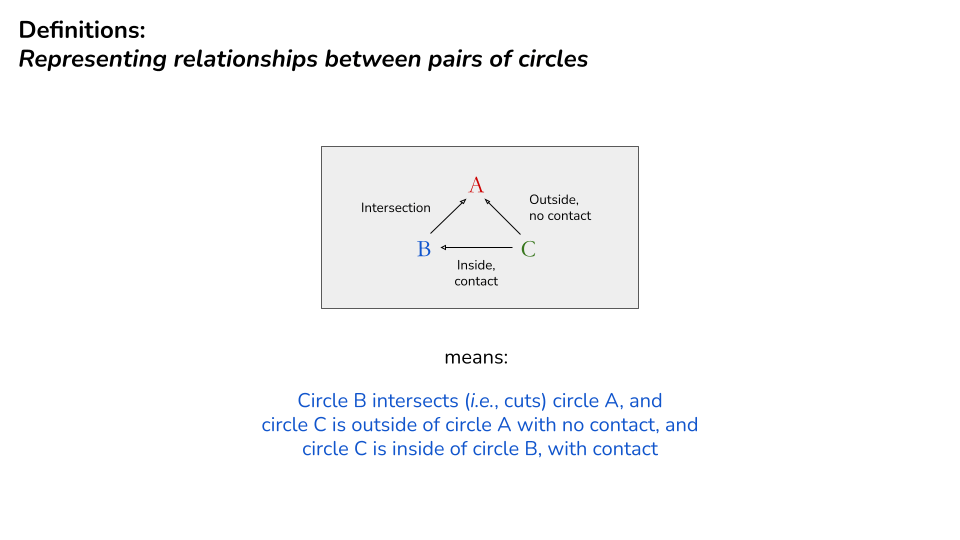
(Second-order criterion) In the context of the first criterion, circles may be arranged in different ways. Sub-arrangements are created based on the number of kissings and crossings.
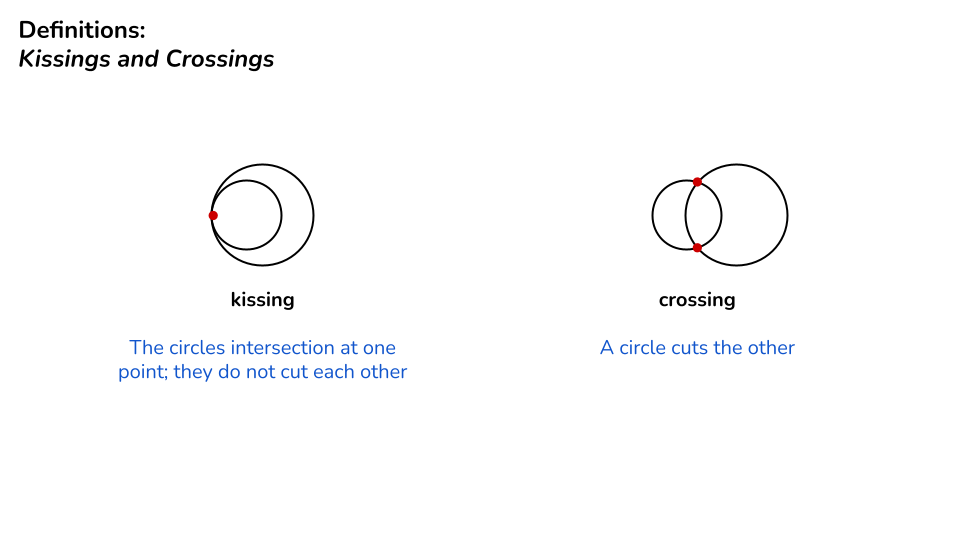
Here is an illustration: the { intersection; intersection; intersection } combination corresponds to a unique arrangement according to the first-order criterion but to three different arrangements when considering the number of crossings:
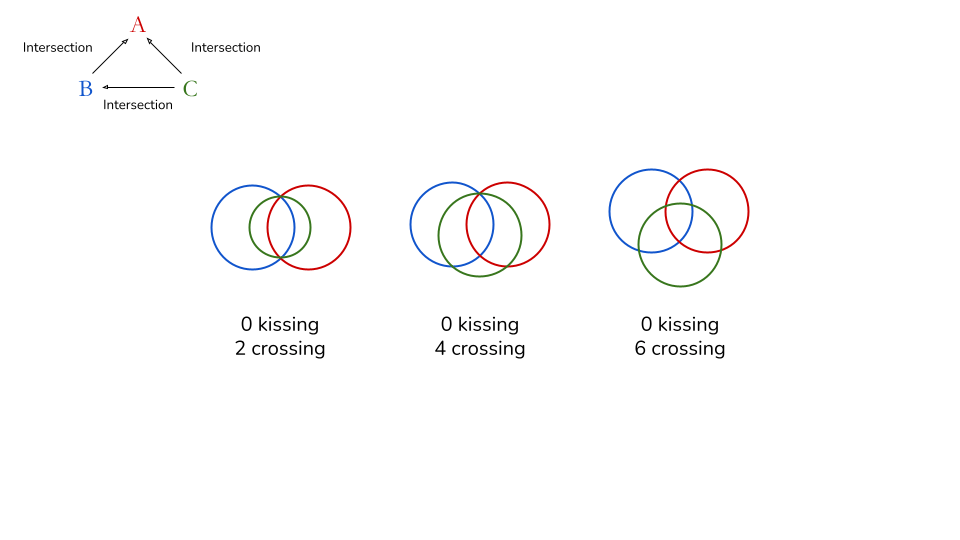
We have brute-forced (that is, computed the cartesian product of the sets of relationships between pairs of circles, for the three pairs of circles) the first criterion to generate all possible arrangements of circles ({ inside, no contact; inside, no contact; inside, no contact }, ..., { outside, no contact; intersection; inside, contact }, ...).
After having excluded combinations of constraints that are naturally invalid and filtered out duplicated arrangements, we have identified
45 unique arrangements using the first-order criterion only
49 unique arrangements using the combination of first-order and second-order criteria (therefore, validating the findings of the StackExchange post).
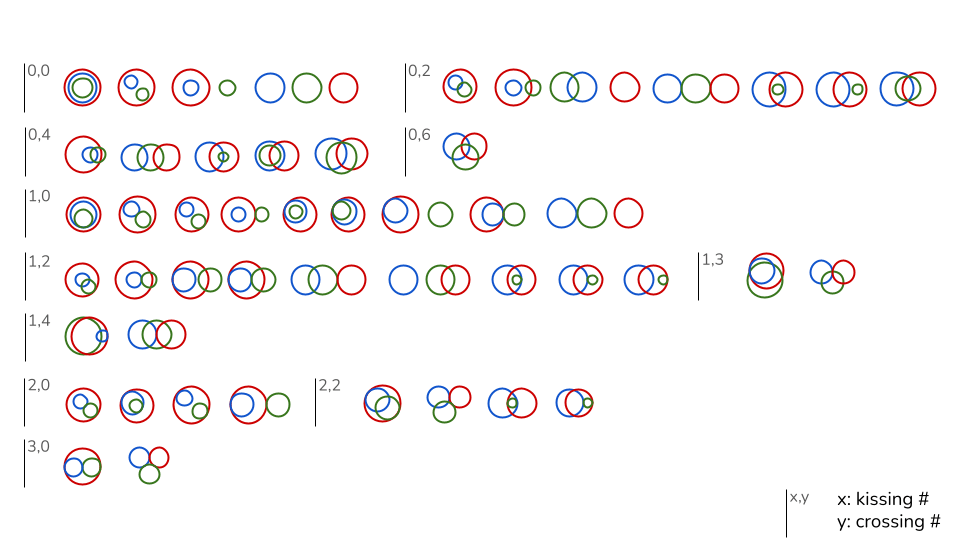
Subscribe to my newsletter
Read articles from Guillaume Lethuillier directly inside your inbox. Subscribe to the newsletter, and don't miss out.
Written by

Guillaume Lethuillier
Guillaume Lethuillier
Opinions expressed in this blog are solely my own and do not express the views or opinions of my employer